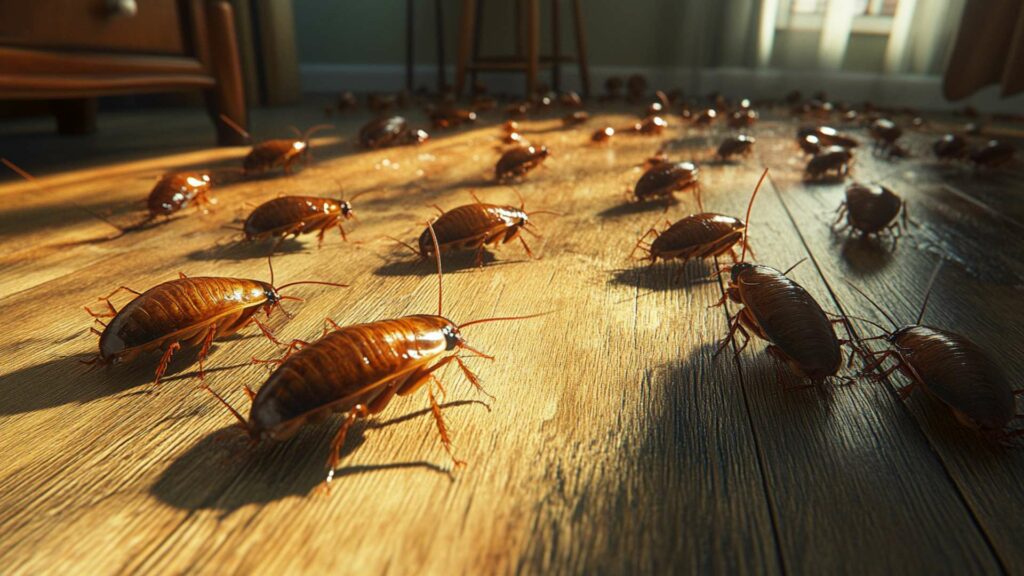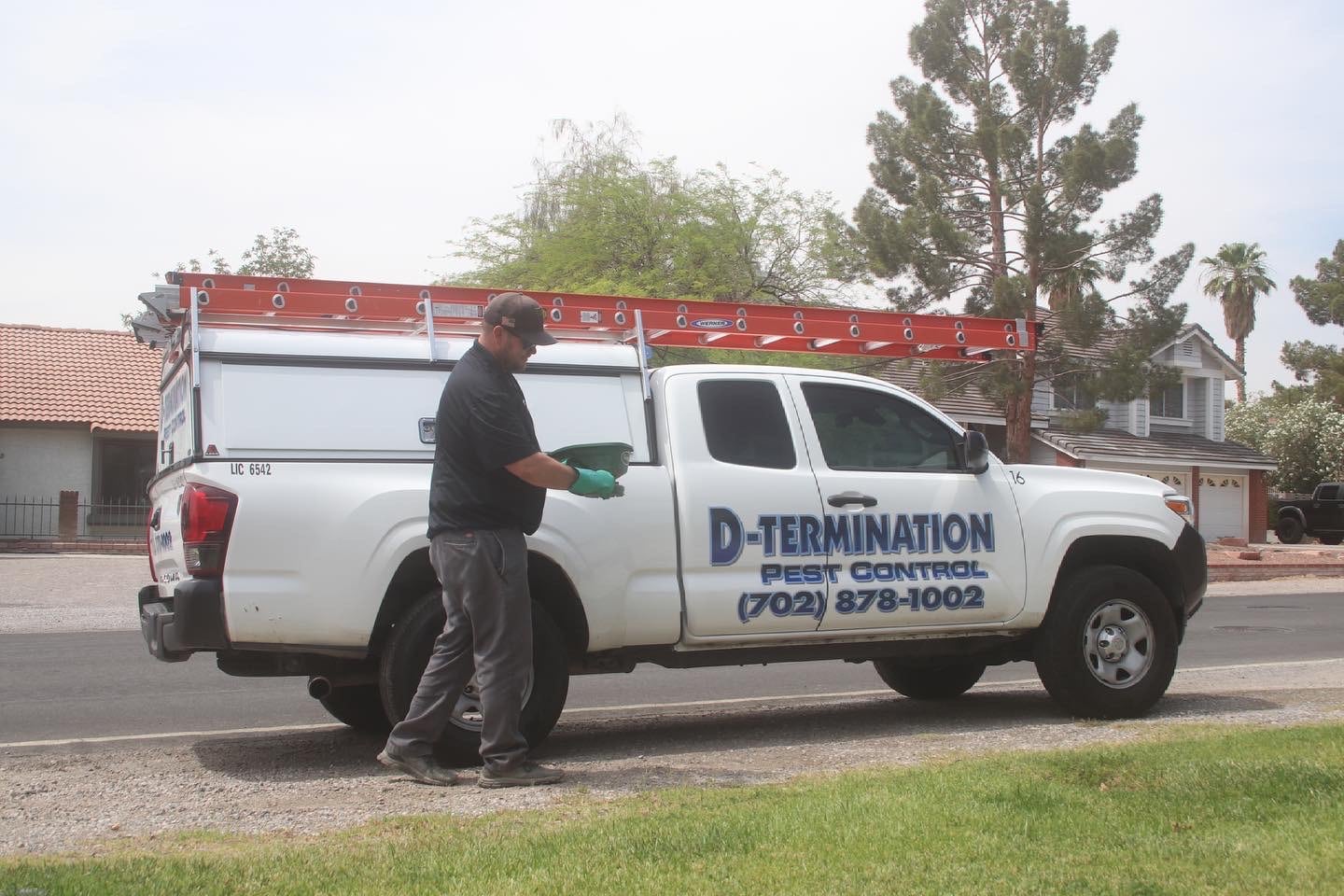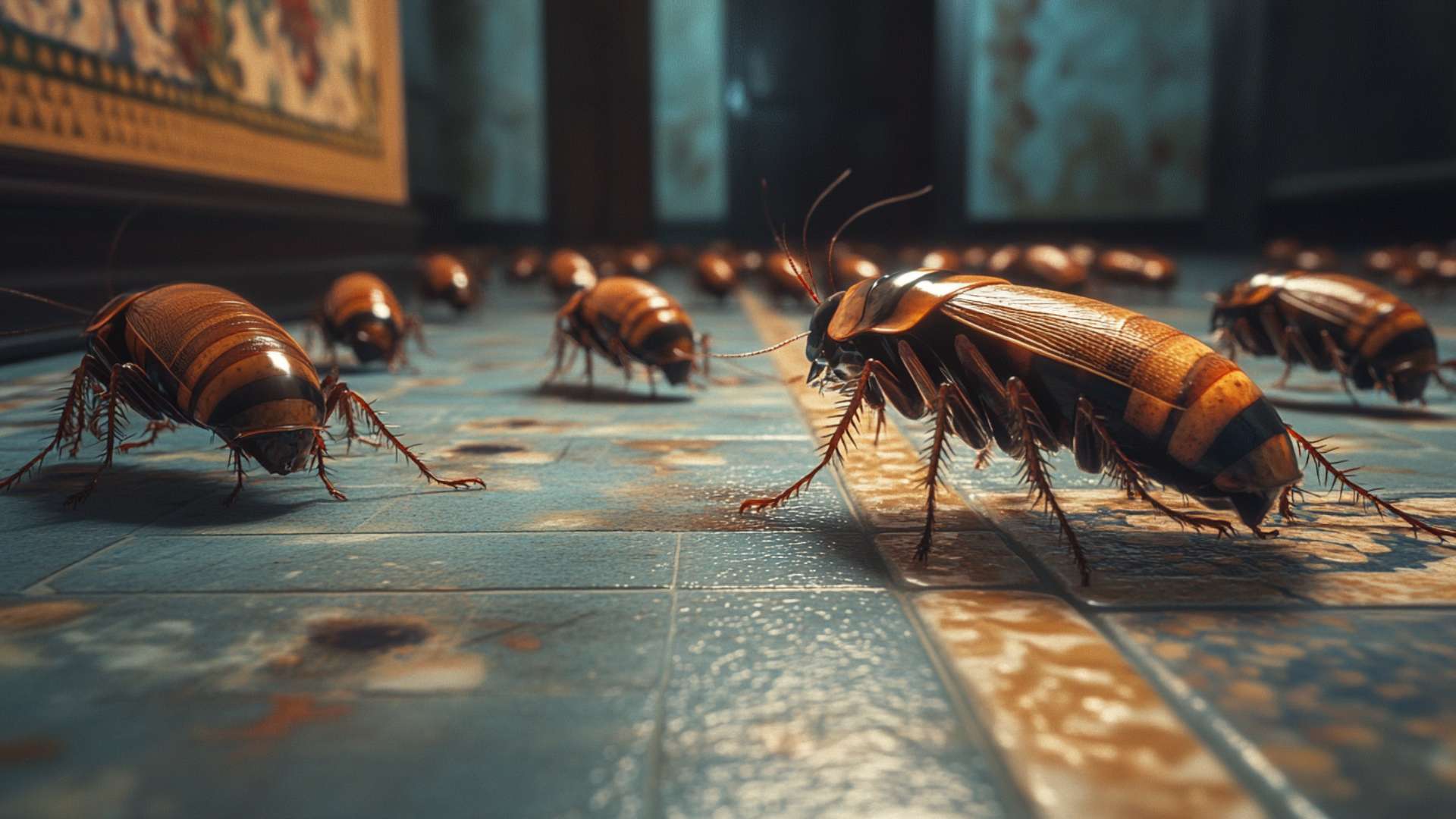Roaches, those scuttling, creepy crawlers that can send shivers down your spine. Whether you’ve had a run-in with these resilient pests or not, understanding the dynamics of a roach infestation is crucial for effective control and maintenance of a healthy home environment. In this article, we’ll delve into the eerie world of roach infestations and explore the importance of identifying dying roaches.
A brief overview of roach infestations
Roaches in your home are not just unpleasant to encounter; they can pose serious health risks and indicate underlying hygiene or structural issues. Cockroaches belong to a group of insects known for their adaptability and survival instincts. Their ability to thrive in various environments makes them particularly troublesome pests.
Common signs of a roach population include finding dead cockroaches around your living spaces, spotting live ones scurrying away when you turn on the light at night, or discovering the roach droppings resembling small coffee grounds near food and water sources. These nocturnal creatures are masters at hiding in dark places such as cracks, crevices, and behind appliances.
Take Control of Your Home’s Pest Destiny! Discover the secrets to early roach detection and gain peace of mind with our comprehensive roach infestation signs and detection guide. Say goodbye to unwanted guests!
Importance of identifying dying roaches

While it may seem counterintuitive to care about finding dead roaches among the living, being able to identify dying or deceased individuals is vital for several reasons. First and foremost, it indicates that your efforts to control their population are working – fewer roaches means greater chances of successfully getting rid of these pests. Moreover, recognizing the signs that indicate how to tell if roaches are dying allows you to assess the effectiveness of treatments such as baits and traps.
If you notice dead roaches after implementing pest control measures, it suggests that these methods have disrupted their reproductive cycle or weakened their numbers significantly. Identifying dying roaches also helps uncover potential underlying issues within your home environment.
For instance, it could indicate pesticide exposure or environmental factors such as temperature and humidity that influence their overall health. By understanding these dynamics, you can take appropriate measures to limit roach infestations and prevent them from returning.
In the following sections, we’ll explore the various signs that can help you differentiate between healthy and dying roaches. By gaining this knowledge, you’ll be better equipped to tackle these sneaky pests head-on and restore peace of mind in your dwelling.
Signs of Dying Roaches
Physical Appearance
When it comes to finding dead roaches and identifying dying roaches, their physical appearance can offer important clues. One common sign is their sluggish movements and inability to crawl quickly.
You may notice that they seem lethargic, making slow and uncoordinated efforts to move around. Instead of darting away when disturbed, they may struggle to scuttle away or even appear immobile.
Another indicator of dying roaches is a discolored exoskeleton or unusual markings. Normally, healthy roaches have a shiny, uniform coloration, but when they are nearing the end of their lifespan or suffering from illness, their exoskeleton can become dull or develop irregular patterns.
Look out for any discoloration such as dark spots, patches, or even a paler appearance than usual. Additionally, fragile and easily breakable limbs are often observed in dying roaches.
Their legs become weak and brittle due to the deterioration of muscle strength and overall health. You may see them struggling to support themselves properly on these weakened limbs, often stumbling or collapsing altogether.
Behavioral Changes
In addition to physical cues, behavioral changes can also indicate whether a roach is nearing its end. One prominent change is decreased activity levels; instead of being as active as before, dying roaches tend to hide more frequently in dark places such as crevices or behind appliances. They may retreat into hard-to-reach corners where you might find fewer live cockroaches.
Another telltale sign is uncoordinated movements or difficulty maintaining balance. Dying roaches often exhibit jerky motions and struggle with coordination while attempting simple tasks like walking on flat surfaces or climbing walls.
Their lack of coordination can be attributed to weakening muscles and neurological impairments associated with aging or illness. Furthermore, dying roaches might show a diminished response to stimuli like light or movement.
While healthy cockroaches typically exhibit a heightened sensitivity to their environment, dying individuals become less responsive. They may fail to scuttle away when you turn on a light or startle them with sudden movements.
This reduced responsiveness is often due to the declining health and weakened sensory systems of the roaches. Identifying these physical and behavioral signs of dying roaches can be crucial in determining the state of a cockroach infestation and assessing the effectiveness of pest control measures.
However, it’s important to note that if you have a severe roach infestation, it is advisable to seek professional assistance from trained pest control technicians or consider using proven roach sprays or baits. These professionals understand how to eliminate cockroaches effectively without resorting to toxic chemicals that may pose risks to humans or other insects in your home.
Odor Cues

Pheromones released by dying roaches
When roaches are nearing the end of their lives, they release specific chemicals called pheromones. These pheromones serve as signals to other roaches in their vicinity, indicating that danger or death is imminent.
In simpler terms, it’s like a distress call meant to alert other members of the roach population. The pheromones emitted by dying roaches have a distinct and unpleasant smell, often described as a mix of moldy bread and oily residue.
Foul smell resembling a mix of moldy bread and oily residue
The odor associated with dying roaches is not an aroma you would want wafting through your home. It can be quite pungent and offensive to our senses. Imagine the scent of stale bread left in a damp corner combined with an oily residue reminiscent of rancid cooking oil – that’s pretty much what you can expect from the smell released by these unfortunate creatures on their last legs.
Increased intensity in confined spaces or heavily infested areas
If you happen to notice an unpleasant smell similar to moldy bread mixed with an oily residue becoming more intense in certain areas of your home, it could be an indication that there are dying roaches nearby. Confined spaces or heavily infested areas tend to have a higher concentration of this foul odor due to the larger number of live roaches present. Keep in mind that this odor may also attract other insects or pests looking for a quick meal, so it’s crucial to address the issue promptly before it escalates into a full-blown infestation.
Remember, while these odor cues can be helpful for identifying potential issues within your home, they should not replace seeking professional help from a professional exterminator, if you suspect an ongoing cockroach problem. However, being aware of the distinct smell emitted by dying roaches can serve as an early warning sign and prompt you to take action to prevent further infestation.
Nesting Behavior Alterations
When Nests are Abandoned: The Lone Egg Casings and Unattended Nymphs
Picturing a cockroach nest might conjure up images of dark corners filled with roach eggs and live cockroaches scurrying about. But when roaches are on the brink of death, their nesting behavior alters dramatically. One telltale sign is the presence of abandoned egg casings in unexpected places.
These singular eggs, usually hidden away in secluded spots by diligent female roaches, are left unattended when the mother senses her impending demise. Furthermore, as the population dwindles due to dying members, nymphs—baby cockroaches—may also be found alone or in small groups without adult supervision.
In a healthy roach colony, adult roaches meticulously care for and protect the nymphs. However, when facing their own mortality, they prioritize self-preservation over parenting duties.
Fewer Roaches: A Clear Indicator of a Fading Colony
A once-thriving roach infestation may start showing signs of decline as dying individuals become increasingly prevalent. As roaches die off one by one due to factors such as baits and traps or exposure to boric acid or roach sprays, the population size within the nest naturally decreases.
The dark places that were once teeming with life now appear less populated. As you observe your surroundings for signs of reduced population size within the nest, it’s important to note that finding fewer live cockroaches in your home doesn’t necessarily mean your infestation is over.
Cockroaches are incredibly resilient creatures capable of adapting to adverse conditions. Even if some cockroaches die off, there may still be survivors hiding in inaccessible areas or repopulating from eggs laid before their untimely demise.
The Impact of Nesting Alterations on Colony Dynamics
When a roach colony faces the imminent loss of its members, the dynamics within the group undergo significant shifts. As dominant individuals succumb to their fate, weaker or previously subordinate roaches may seize the opportunity to rise in rank. Faced with potential competition for limited resources, these surviving cockroaches may exhibit increased aggression towards weakened individuals.
In extreme cases, when food and water sources become scarce due to dying roaches’ inability to find and secure sustenance, cannibalism may even occur. Cockroaches are opportunistic scavengers, and when confronted with desperate circumstances, they resort to consuming dead roach carcasses as a survival mechanism.
Impact on the Colony Dynamics
Dominance Shifts Among Surviving Roaches
When roaches start to die within a colony, it can lead to a significant upheaval in the social dynamics of these resilient insects. Roach colonies have a complex hierarchical structure where dominant individuals exert control over their subordinates.
However, with the demise of certain dominant members, there is an opportunity for previously subordinate roaches to rise in rank and claim their place at the top. This shift in dominance can create tension and competition among surviving roaches as they vie for control and resources within the hierarchy.
Increased Aggression Towards Weakened Individuals
In the world of roach colonies, survival is everything. When some roaches start to show signs of weakness or impending death, it triggers a primal instinct among their fellow colony members.
These weakened individuals become targets for aggression from stronger, healthier roaches who see them as potential liabilities that could attract predators or jeopardize the overall survival of the colony. As a result, you may observe increased aggression towards dying or weakened roaches as their peers attempt to eliminate any perceived threats.
Possible Cannibalism as a Survival Mechanism

Cannibalism may seem like an exceptional horror reserved for fictional tales, but in reality, it is not uncommon among desperate insects like cockroaches when resources are scarce. As dying roaches become more vulnerable and succumb to their fate, surviving members of the colony may resort to cannibalistic behaviors as a means of survival. They feed on deceased colony members not out of malice but rather out of necessity – it’s an efficient way for these resourceful scavengers to recycle nutrients and prevent them from going completely to waste.
It is worth noting that while cannibalism might be unsettling to witness in your home’s corners or dark spaces overrun with a roach problem, it highlights the opportunistic nature of these pests and their ability to adapt to harsh conditions. The presence of dead roaches can serve as a grim reminder that your pest control measures need reinforcement, as a thriving population can quickly replace the fallen members.
Environmental Factors Influencing Roach Health
Effects of Temperature and Humidity on Their Lifespan
Roaches, those resilient creatures that can seemingly survive anything, are still susceptible to the influences of their environment. Temperature and humidity play a crucial role in determining their overall lifespan. These creepy crawlies thrive in warm and humid conditions, with temperatures around 80 degrees Fahrenheit and humidity levels ranging from 70% to 75%.
In such an environment, roaches can reproduce rapidly, leading to a booming infestation if left unchecked. On the other hand, extreme temperatures can be detrimental to roach health.
When exposed to intense cold or heat for prolonged periods, cockroaches may struggle to survive. Freezing temperatures can cause their bodily functions to slow down significantly or even cease altogether.
Similarly, the scorching heat can dehydrate them rapidly due to increased water loss through their exoskeleton. So if you’re dealing with a roach infestation during the winter or summer months, extreme temperature fluctuations might aid in controlling the population.
Impact of Pesticide Exposure on Their Physiology

Pesticides are commonly used as a tool against cockroach infestations due to their effectiveness in eradicating these pests. However, it’s important to understand the impact of pesticide exposure on the physiology of roaches.
Many commercially available roach sprays contain chemicals like pyrethroids or organophosphates that target the nervous system of insects. When exposed to these pesticides, cockroaches undergo severe neurological distress that disrupts their normal bodily functions.
It impairs their ability to move properly and coordinate essential activities like feeding and breeding. Prolonged exposure can ultimately lead to paralysis and death for these persistent critters.
It’s worth noting that over time some cockroach species and populations have developed resistance mechanisms against certain pesticides due to genetic mutations. Therefore, it’s crucial to rotate the use of different types of pesticides to prevent the emergence of pesticide-resistant strains and ensure more effective control.
Understanding the environmental factors that influence roach health can provide valuable insights into managing infestations effectively. Temperature and humidity levels significantly impact their lifespan, making extreme hot or cold conditions potential allies in controlling populations. Pesticide exposure can be a powerful weapon against these resilient creatures but requires careful consideration for long-term effectiveness.
By comprehending how roaches interact with their environment and the effects it has on their physiology, you can make informed decisions when implementing pest control measures. Remember that prevention is key—eliminating food and water sources, sealing cracks, and regularly cleaning your living spaces will help prevent roaches from taking up residence in your home in the first place.
Conclusion
Recap Key Signs Indicating Dying Roaches
In our journey to understand the telltale signs of dying roaches, we have explored various physical and behavioral indicators. Physically, a sluggish movement, discolored exoskeleton, and fragile limbs are all red flags that a roach may be nearing its end.
Behaviorally, decreased activity levels and hiding more frequently, along with uncoordinated movements or lack of response to stimuli, are strong indications of a dying roach. Furthermore, the release of pheromones emitting a foul smell resembling a mix of moldy bread and oily residue can also point towards their demise.
Importance of Promptly Addressing Infestations for Effective Control
The signs discussed in this article not only provide insights into the health status of individual roaches but also shed light on the overall condition of your infestation. Understanding when roaches are dying is crucial in developing an effective control strategy. By recognizing these signs early on, you can take immediate action to prevent further infestation and minimize potential damage to your home.
Promptly addressing an infestation is vital because cockroaches reproduce rapidly. If left unchecked, they can quickly multiply in numbers, leading to a much larger problem down the line.
Furthermore, the dead bodies of roaches attract other insects that feast upon them as an easy meal. This means that if you find dead cockroaches lying around your house or come across brown stains or droppings from live cockroaches more frequently than usual, it’s time to act swiftly.
By taking proactive measures in keeping roaches out such as proper sanitation practices (eliminating food crumbs and sealing off entry points), using cockroach baits containing boric acid (an effective insecticide), or employing professional pest control services when necessary, you can regain control over your living environment and maintain a roach-free home. Remember, the battle against roaches is not a lost cause.
With your newfound knowledge about the signs of dying roaches and the importance of prompt action, you are armed to tackle this pest problem head-on. So go forth, conquer those pesky critters, and reclaim your home as a sanctuary free from unwanted intruders.
Get rid of cockroaches with D-Termination: the premier pest control service in Las Vegas!

Are you struggling with cockroach problems? Rest assured, D-Termination is here to provide assistance. Our team of experts excels in eliminating cockroach infestations, ensuring cleanliness, hygiene, and peace of mind are restored. Bid farewell to cockroaches and make the choice for effective pest control by choosing D-Termination today!
To schedule your cockroach control service and reclaim your space from these resilient pests, you can contact us at 702-919-6310 or visit dtermination.com.
Frequently Asked Questions:
Signs of a dying cockroach include sluggish movements, inability to walk properly, and a lack of response to stimuli.
When cockroaches are dying, they may exhibit abnormal behavior such as twitching, convulsions, or being unresponsive.
The effectiveness of your roach treatment can be assessed by observing a decrease in live roach sightings and a decline in roach activity over time.
Not cleaning up dead roaches can attract other pests, create unpleasant odors, and potentially contribute to the spread of bacteria or diseases.








